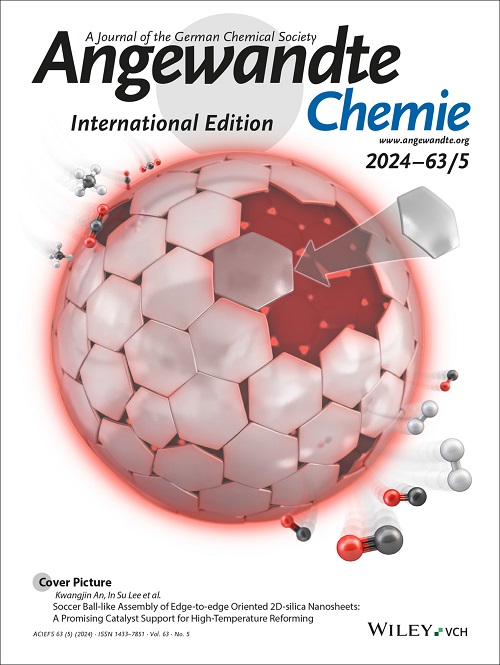Photo‐Self‐Fenton Reaction Mediated by Silver Single Atom and Cluster Photocatalysts for Highly Selective Generation of Singlet Oxygen toward Efficient Organic Wastewater Treatment
IF 16.1
1区 化学
Q1 CHEMISTRY, MULTIDISCIPLINARY
引用次数: 0
Abstract
The persistent organic pollutants in wastewater have caused the heavy threat to ecosystems and humans, but selective removal of these pollutants still faces challenges due to low efficiency, extra addition of oxidation agents and many highly toxic intermediate products. Herein, we report an efficient fast kinetic conversion via a photo‐self‐Fenton‐like system of *OOH intermediate‐involved oxidation pathway with high selection generation of singlet oxygen (1O2) from the novel in‐situ H2O2 heterolytic activation route for the first time. The single‐atom and cluster doped zinc oxide (AgSA‐AgC/ZnO) was successfully synthesized to achieve the 100 % degradation yield and 80 % total of carbon (TOC) of the p‐chlorophenol (4‐CP) as the typical pollutant under solar‐light irradiation and exhibit long‐term activity in a self‐design photo‐Filter reactor for 4‐CP degradation. It was attributed to the accelerated cycles from Aghighδ+ site to Aglowδ+ site in Fenton‐like catalysis achieving the rapid selection conversion from the H2O2 heterolytic cleavage to ~100 % 1O2 via the intermediate *OOH at the Ag SA sites for ring‐opening reaction and reactive H* at the Ag clusters sites for dechlorination reaction, respectively. This discovery gives the deep understanding of the high‐performance photo‐self‐Fenton reaction through in‐situ cycles of variable metals for the organic contaminants treatment.求助全文
约1分钟内获得全文
求助全文
来源期刊
CiteScore
26.60
自引率
6.60%
发文量
3549
审稿时长
1.5 months
期刊介绍:
Angewandte Chemie, a journal of the German Chemical Society (GDCh), maintains a leading position among scholarly journals in general chemistry with an impressive Impact Factor of 16.6 (2022 Journal Citation Reports, Clarivate, 2023). Published weekly in a reader-friendly format, it features new articles almost every day. Established in 1887, Angewandte Chemie is a prominent chemistry journal, offering a dynamic blend of Review-type articles, Highlights, Communications, and Research Articles on a weekly basis, making it unique in the field.

 求助内容:
求助内容: 应助结果提醒方式:
应助结果提醒方式:


